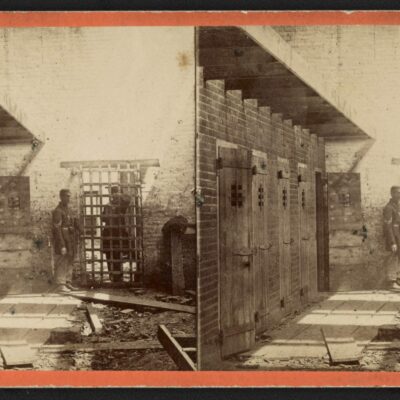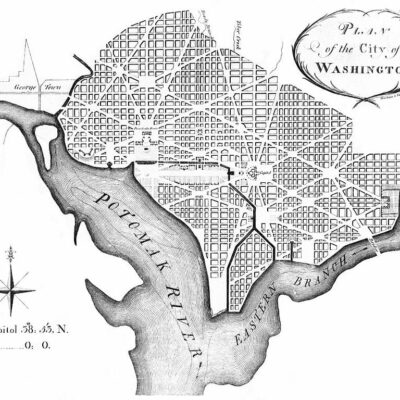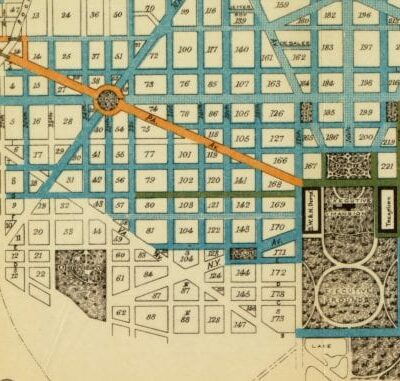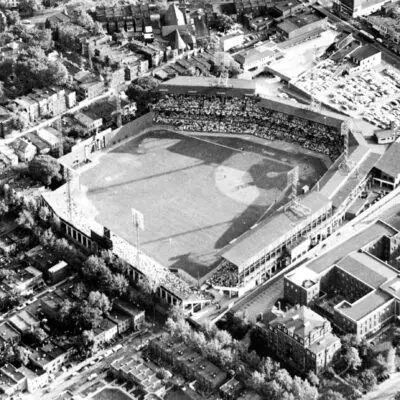This is a guest post by Angela Harrison Eng
At a first glance, there is nothing monumental about 1625 K Street NW. A bland building occupies the space, along with several nondescript businesses and a parking garage. However, on this site once stood a three story Victorian town home, built of green limestone with a beautiful magnolia bush out front. In the 1920s, this home would be known as “The Little Green House on K Street” and the site of corrupt political dealings within the Harding administration.
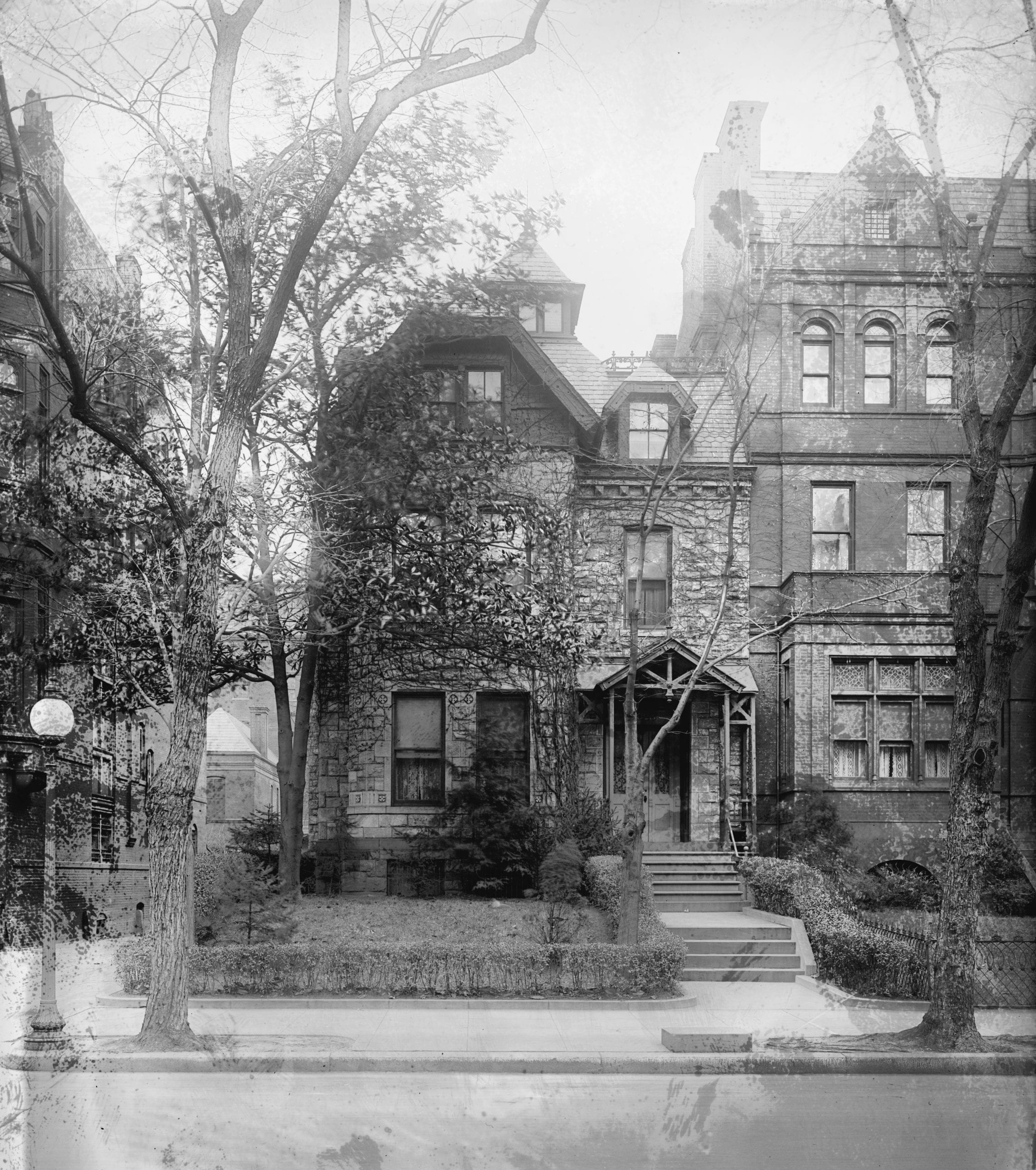
When Warren G. Harding took office in 1921, he brought some of his friends and sycophants to Washington with him. Among them were Harry M. Daugherty, whom he appointed Attorney General; Jess Smith, Daugherty’s aide; and Howard Mannington, an attorney and manager of the Harding campaign in Ohio. These men, along with a few others, such as Albert Fall and Charles Forbes, would later be known as the “Ohio Gang.”

Author Albert Kahn pinpoints Mannington as the man who leased 1625 K Street. Daugherty and Smith lived nearby on H Street. The house on K Street soon became the headquarters for the Ohio Gang. A number of plots, scandals, and other disreputable dealings were transacted there. Garrett Peck notes that these men and others “regularly met, drank, smoked, and played poker” there.
He continues, “They also cooked up schemes to defraud taxpayers. The most famous was the Teapot Dome Scandal, whereby Secretary of the Interior Albert Fall secretly leased out part of the nation’s strategic oil preserve in exchange for a huge bribe. Veterans Bureau chief Charles Forbes pocketed large sums that should have gone to veteran services, while attorney general Harry Daugherty took kickbacks from lawyers.” There were also reports of other illicit activities, such as bootlegging and even some sexual affairs.
Authors Hilda and Garry Davis recount that one man, Meyer Davis, provided music at the house at the height of the scandalous activity. Reporters were disappointed however, to learn that Meyer, “aside from knowing his music, knew the fine art of discretion.” Many years later, in an interview, Meyer claimed the goings-on at K Street never happened there, but at a location on H Street.
The authors never follow up on what this comment meant, but Meyer could have been referring to the home of Daugherty and Smith. When asked of the activities at the house, he stated, “President Harding was in and out of that place . . . they played cards, dined, and danced. Some slept there, some didn’t. There could have been some hanky-panky.”
Another account of events at the house on K Street from Charles Mee Jr. states, “from time to time, liquor was delivered to the house twenty cases at a time . . . the gossips told of wonderful parties, such as the one—no doubt imaginary—in which a woman was killed with the slivers of a shattered champagne glass thrown at her by another woman.”
The activity at the house on K Street was said to last from the time Harding took office until his unexpected death in 1923. Shortly before his death, he had sensed heightening political tensions and decided to take a speaking tour of theUS. Shortly before he began the tour, he dismissed Jess Smith from Washington. Smith, apparently distraught over the dismissal, was found dead of a gunshot wound to the head on May 30th, 1923.
Though his death was ruled a suicide, some sources suggest that it was a setup. Author Nathan Miller claims that on the trip back from the tour, Harding summoned Herbert Hoover and asked for advice on how to handle a scandal brewing in the administration. Shortly after, he died of a stroke in San Francisco.

Eventually the scandals broke and the Ohio Gang was subpoenaed. Roxy Stinson, the ex-wife of Jess Smith, provided key testimony about the Little Green House to the courts.. A New York Times article from 1924 recalls, “For two hours she told of mysterious ‘deals,’ involving pardons and permits to withdraw liquor, alleged speculations in oil and secret conferences in most of which she contended the attorney general had a part.” She also spoke of the exchange of large sums of money and “suitcases” of alcohol.
Mannington, however, was quick to declare his innocence and claimed Stinson “talked too much.” Daugherty himself was quoted in a 1924 New York Times article as saying, “ I never saw the ‘mysterious green house on K Street’ and was never in it.” In the end, Albert Fall was jailed for his involvement with the Teapot Dome Scandal, Charles Forbes was imprisoned for defrauding the government, and Mannington more or less faded into obscurity. Daugherty was tried but acquitted. Later, Calvin Coolidge dismissed him from his position as Attorney General.
The house faded into obscurity for the next few years. In 1926, a New York Times article notes the house was sold and was slated to become a business and apartment complex combination. However, this plan never materialized, as a 1929 Atlanta Constitution article announced the Little Green House became a fraternity house for 20 George Washington University students.
The article mentions a few signs of the “old days,” the most notable being the wine cellar in the basement. There was “evidence of free and frequent use. There was sawdust on the floor, numerous racks for bottles along the walls and heavy wooden doors barring the entrance.” However, the fraternity tore out the cellar and subsequently used it for initiation ceremonies. The boys were also aware of the building’s history and joked with visitors about a hook in the wall on the 2nd floor, claiming it was where Jess Smith committed suicide.
The house was mentioned again in a 1931 article of The New York Times, stating the house would again be remodeled for businesses. It is also one of the few sources that describes the house: “Three stories high, with 15 rooms, it was ‘little’ only by comparison with its city surroundings.
Built of limestone of slightly greenish hue, it was ‘green’ only in contrast with the stately old mansions of red brick and the modern business blocks of white stone.” The building plans included removing the back garden wall and cutting more windows into the front.
Ultimately, The Little Green House on K Street was torn down in 1941. An office building now stands in its place. Below is the Google Street View today.
